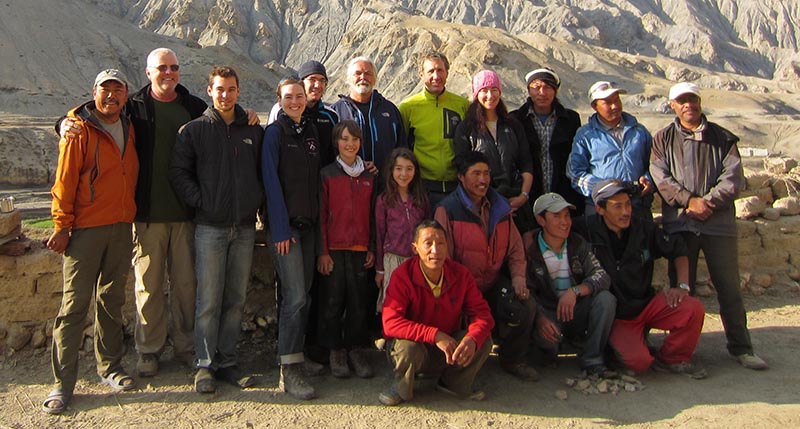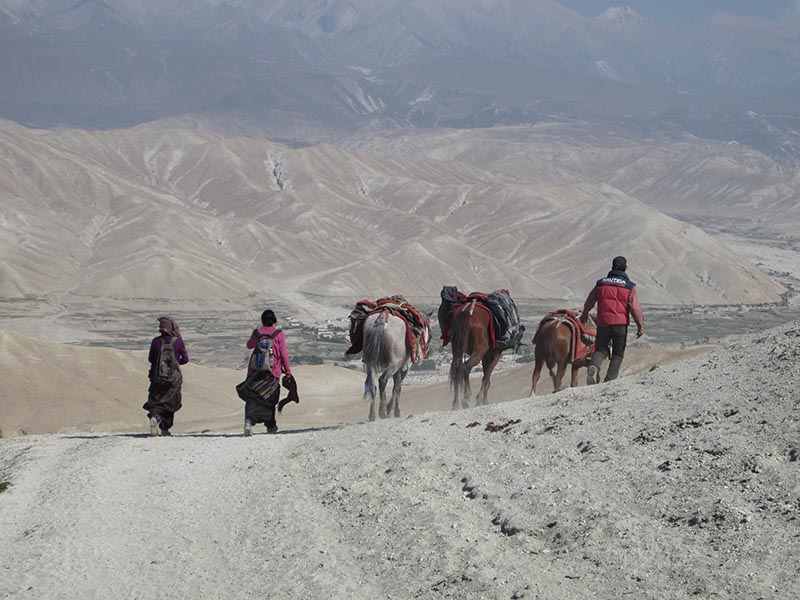Earliest inhabitants of Upper Mustang came from Tibet, finds scientific study
KATHMANDU: A new scientific study has found that the earliest inhabitants of Upper Mustang, who arrived some 3,000 years ago, originally came from the north and the Tibetan plateau, according to a distinguished professor of anthropology at the University of California, Merced.
Sharing the findings and prospects of the scientific research with THT, Lead scientist Prof Mark Aldenderfer said the outcome of the first ancient DNA investigation of the Himalayan arc, generating genomic data for eight individuals ranging in time from the earliest known human settlements to the establishment of the Tibetan Empire made it clear that the original inhabitants of Mustang were from the Tibetan plateau.

“Our research compared the DNA from these ancient people to those of modern folks, and the closest match are indigenous Tibetans,” the scientist who led the research, along with colleagues from the University of Oklahoma, the University of Chicago and Nepal, said. Earlier, scholars had claimed that the first inhabitants of high Himalayas came
from South Asia, South East Asia, the Tibetan plateau and Mongolia.
According to Aldenderfer, the scientific research had been conducted in Upper Mustang to explore ways in which high elevation environments affect the movement of people, material culture, ideas and genes, as high elevation and high mountain valleys were among the last places on the planet colonised by humans due to the combined challenges of hypoxia, cold stress and the relative scarcity of resources found in them. “What our team has been studying for the past ten years is the deep history of the Himalayan arc while the research project has pushed the history of Mustang back to 3,000 years ago through the excavation of a series of sites from near Jomsom to close to the Tibetan border at a small village called Samdzong,” he added.
In these sites, they have also found artefacts and rice that are likely from South Asia, trade goods from the Tibetan plateau, and glass beads, some of which have travelled to Upper Mustang from the south of India and possibly even Thailand. “But among the most important things discovered are the remains of the ancient people of Mustang. Their bones tell us stories about their past, what they ate and how they lived and died,” he told THT. “But for our project, perhaps the most valuable insight we can learn from them is in their DNA.”
According to him, another research question asks simply "how do lowlanders become highlanders?" As the majority of our human ancestors evolved as lowlanders but as we know, some people began to live permanently at high elevation, such as in the Himalayas, Tibet, and the Andes of South America, the scientist said, adding, “To live and thrive at high elevation, for women to have successful pregnancies, we must have specific genetic adaptations that help our bodies cope with the lack of oxygen in these high places. The DNA can tell us whether the earliest inhabitants of Mustang had these beneficial genes, and we have discovered evidence for at least one variant of them in these early people. Over time, another gene variant is added. This discovery reinforces our findings that the original inhabitants of Mustang were from the Tibetan plateau.”
Christina Warinner, presidential research professor at the University of Oklahoma, said, “The new research will allow us to understand a great deal more about the prehistory of Nepal as it investigates more individuals and includes two additional archaeological sites.”
The new investigation will also include new analyses such as kinship analysis- identification of family members within the tombs and new information about the foods eaten by these ancient peoples, Warinner who played a key role in sequencing the nuclear and mitochondrial genomes of eight high-altitude Himalayan individuals dating to three distinct cultural periods spanning 3150 to 1250 years before present, shared.






